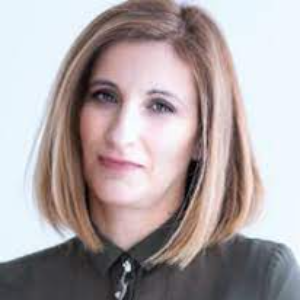Title : Mechanobiology in neural tissue regeneration
Abstract:
The peripheral nervous system consists of glial cells and neurons that receive the necessary chemical, physical, and mechanical stimuli for their adhesion, proliferation, and differentiation from their extracellular milieu.
Mechanotransduction refers to the ability of a cell to actively sense and respond to mechanical cues of its microenvironment by adapting its behavior accordingly. For such a response the cell activates a series of mechanisms to receive mechanical stimuli from the surrounding extracellular matrix (ECM) or from neighboring cells. These mechanical stimuli are converted intracellularly to biochemical ones and with their transduction into the nucleus they orchestrate the cell response by regulating gene expression.
Here we present an interdisciplinary approach, where laser engineering, static as well as dynamic flow rate cell cultures, and computational flow simulations were employed to evaluate the effect of topography, shear stress, and their combined action on the mechanosensing and mechanotransduction in neural cells. Specifically, spatial Si platforms of pseudo periodic morphologies were developed via direct ultrafast-laser structuring and were used as substrates for the patterning of neuronal cells. We have thus shown that NGF-treated PC12 cells differentiate well on flat Si and on Si substrates decorated with microcones with low and medium roughness but they do not diffrentiate on the high roughened pattern1. We then found that as the substrate’s roughness increases the number of Focal adhessions (Vinculin staining) decreases especially in th growth cone areas, the activation of Myosin light chain (pMLC-II staining) decreases and YAP nuclear translocation decreases. We believe that in the high roughened substrate cells fail to stabilize growth cone formation and this leads to low differentiation ratio. Additionally, a precise flow-controlled microfluidic system was fabricated to assess the combined effect of shear stress and topography on Schwann and neuronal cells’ behavior. Furthermore, the cell culture results were combined with computational flow simulations to calculate accurately the shear stress values. Via the study of the cytoskeleton rearrangement, vinculin and neural differentiation markers expression, and the YAP translocation, we envisage investigating the mechanisms of mechanotransduction involved in neural cell adhesion, orientation and differentiation. Our results denoted that different types of neural tissue cells respond differently to the underlying topography, but furthermore, the presence of the glial cells alters the adhesion behavior of the neuronal cells in their co-culture. The experimental findings also revealed that depending on the relation of the direction of flow with respect to the orientation of topographical features, wall shear stress gradients are acting in a synergistic or antagonistic manner to topography in promoting guided morphologic cell response3.
In conclusion, we demonstrated the ability to guide the outgrowth of a neural network, in vitro, via the combination of flow-induced shear stress and surface topography, which could in the future be a useful tool for understanding neural network interfaces and their electrical activity, synaptic processes and myelin formation.



